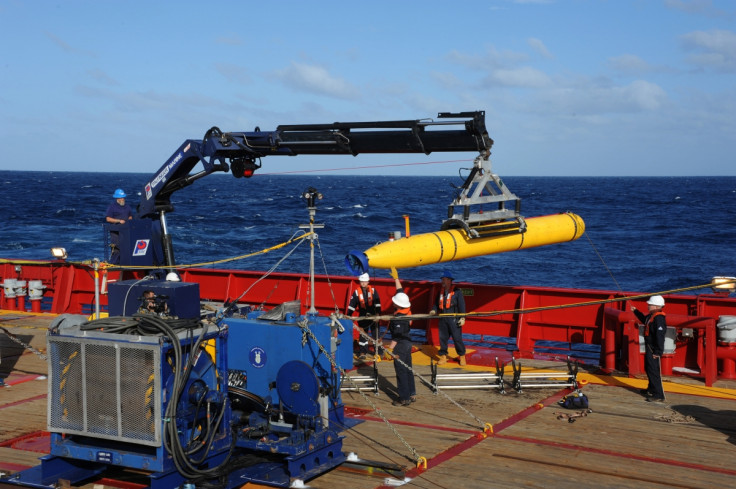Malaysia Airlines MH370: Search Goes Underwater with Bluefin-21 as Oil Slick Discovered

Search crews will deploy a submarine in the Indian Ocean to try and determine whether the "ping" signals detected by equipment are from the missing Malaysian plane's black boxes.
Air Chief Marshall Angus Houston, who is leading the search, said the mini-submarine will scan the sea bed for wreckage from flight MH370 "as soon as possible".
Speaking at a news conference, he said an oil slick has been found within the current search zone of the southern Indian Ocean.
Houston said: "We haven't had a single detection in six days so I guess it's time to go underwater."
He said the crew on board the Australian Defence Vessel Ocean Shield will launch Bluefin-21, the Artemis autonomous underwater vehicle, which can create a sonar map of the area to chart any debris on the seabed.
The move comes after search teams picked up several underwater "pings", suspected to be from the aircraft's black boxes, over the last two weeks.
Houston explained: "Analysis of the four signals has allowed the provisional definition of a reduced and manageable search area on the ocean floor. The experts have therefore determined that the Australian Defence Vessel Ocean Shield will cease searching with the towed pinger locator later today, and deploy the autonomous underwater vehicle Bluefin 21 as soon as possible."
Yet he warned that use of the mini-sub may not lead to the discovery of the aircraft wreckage and using the submarine is a "slow and painstaking process".
The vehicle is expected to take between six weeks and two months to canvass the current underwater zone, as the signals are coming from 15,000 feet below the surface - which pushes the submarine to the deepest it can dive.
Meanwhile, samples from the oil slick will be collected and brought back to land for testing over the next few days.
No new signals have been heard from the search area since 8 April, amid concerns that the batteries of the plane's flight data and cockpit voice recorders have expired.
The first two signals were heard on 5 April by Ocean Shield, which was towing the locating equipment. Expert analysis showed the signals were consistent with those emitted from the black boxes.
The discovery of the equipment is essential for investigators to find out what happened to the Boeing 777, which disappeared on 8 March. The plane was travelling from Kuala Lumpur to Beijing, with 239 people on board.
By analysing satellite data, officials believe the plane diverted away from its intended flight path and crashed into the southern Indian Ocean. The reason is yet unknown and investigators are researching four possible explanations, including sabotage, hijacking and personal or psychological problems of those on board.
© Copyright IBTimes 2025. All rights reserved.






















